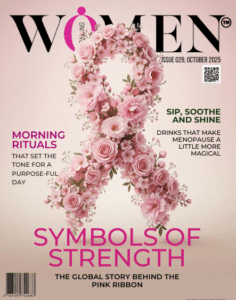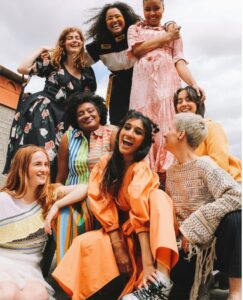By Tom Boyd
Ever wonder why we do some of the things we do or where certain habits came from? From fashion choices to funny sayings, so much of what we call “normal” has roots that are anything but ordinary.
1. Why Women Wear High Heels
Long before heels strutted down runways, Persian horsemen wore them to keep their feet steady in stirrups. European aristocrats later picked up the trend to show off status. Eventually, it slipped into women’s fashion, trading battlefield grit for glamour.
2. Why the Barber’s Pole Is Red, White, and Blue
Those spinning stripes have a bloody past. Medieval barbers doubled as surgeons and performed bloodletting. The red stands for blood, white for bandages, and blue was added in America as a patriotic touch.
3. Why Pencils Are Yellow
Back in the 1800s, a Czech company painted its best pencils yellow to show they contained top-quality graphite from China. Since yellow symbolized royalty in Chinese culture, the color hinted at luxury and excellence.
4. Why We Say “Bless You” After a Sneeze
During the Bubonic plague, sneezing could mean sickness was coming, so people said “God bless you” as a quick prayer. Earlier cultures believed sneezing might let the soul slip out, and the blessing was meant to call it back.
5. Why We Clink Glasses When Toasting
In medieval times, clinking glasses wasn’t just tradition, it was trust. A little splash from one cup to another proved no one was trying to poison anyone. Today it’s simply a cheerful gesture of unity.
6. Why Brides Wear White
Before Queen Victoria, brides wore any color they liked. Her white gown in 1840 changed everything. At first, white showed wealth, since it was hard to keep clean, but later became a symbol of purity and romance.
7. Why the Wedding Ring Goes on the Fourth Finger
Ancient Romans believed a “vein of love” ran straight from that finger to the heart. Science has since disagreed, but the tradition stayed, keeping love close to where it’s felt most.
8. Why Socks Go Missing in the Laundry
Turns out, it’s not just bad luck. Modern studies show small items like socks often slip into washing machine seals or hoses. The mystery “sock monster” might just be your appliance.
9. Why Traffic Lights Are Red, Amber, and Green
When cars came along, engineers borrowed color codes from railways. Red meant danger, green meant safety, and amber was the warning in between. The colors stuck, keeping us all in line.
10. Why Some People Are Called Night Owls
Owls are naturally active at night, and humans with similar habits earned the nickname. The phrase dates back to the 16th century and still perfectly describes anyone who thrives after sunset.
11. Why People Tap a Glass Before Drinking
That little tap isn’t random. In many cultures, it’s a small gesture of acknowledgment or thanks to the host. In old times, it was also a quick way to check if the glass was clean and safe.
12. Why We Say “Raining Cats and Dogs”
Old English streets had poor drainage, and during heavy rains, dead animals sometimes floated through the floods. The chaos inspired the phrase, exaggerating how wild the weather felt.
13. Why No. 2 Pencils Are the Standard
The “2” marks the ideal graphite hardness, dark enough to read clearly but light enough not to smudge. That’s why schools and scan machines made it the default.
14. Why We Say “Turn a Blind Eye”
The phrase comes from Admiral Horatio Nelson, who lifted a telescope to his blind eye during battle so he could “miss” the signal to retreat. Ignoring the obvious has never sounded braver.
15. Why Clocks Chime on the Hour
Before wristwatches and phones, clock towers helped townspeople track time by sound. The hourly chimes kept everyone, from merchants to churchgoers running on the same schedule.
Curious yet?
Stay tuned for the next “Did You Know?” feature, where we’ll dig into more of history’s small wonders hiding in plain sight.







